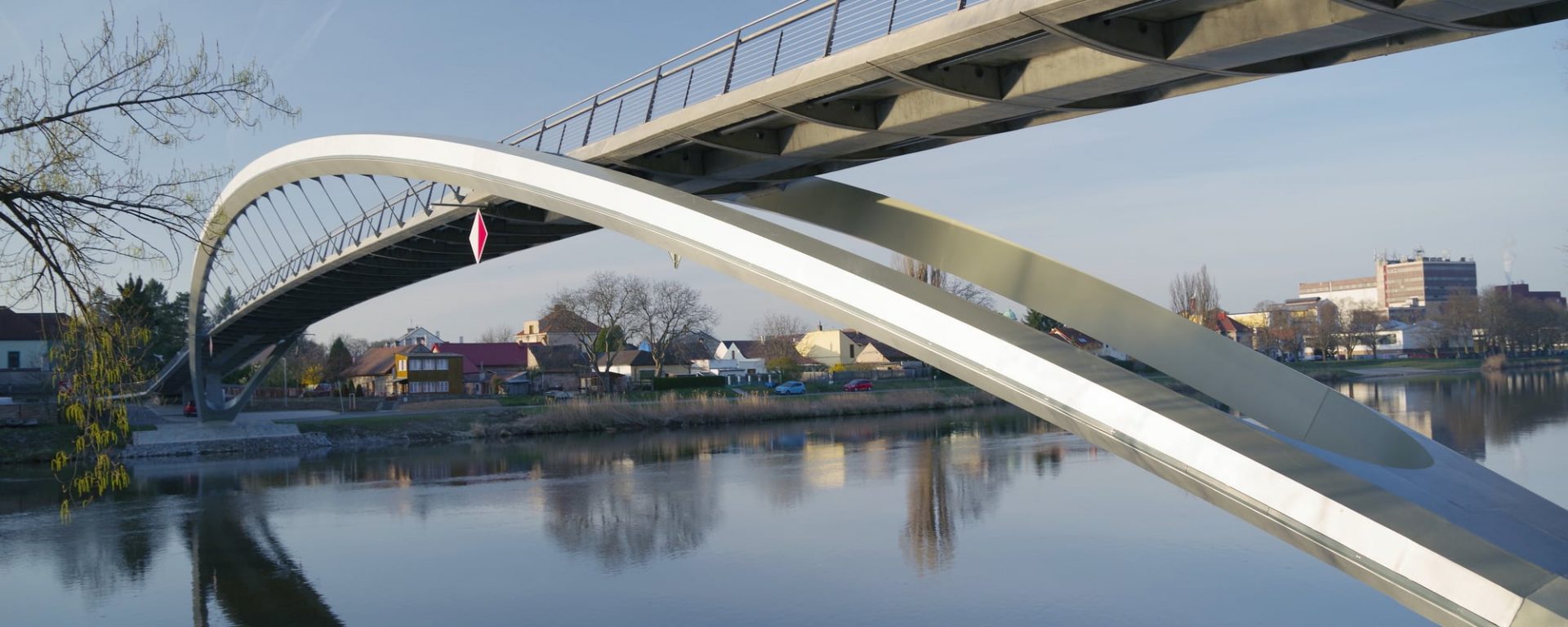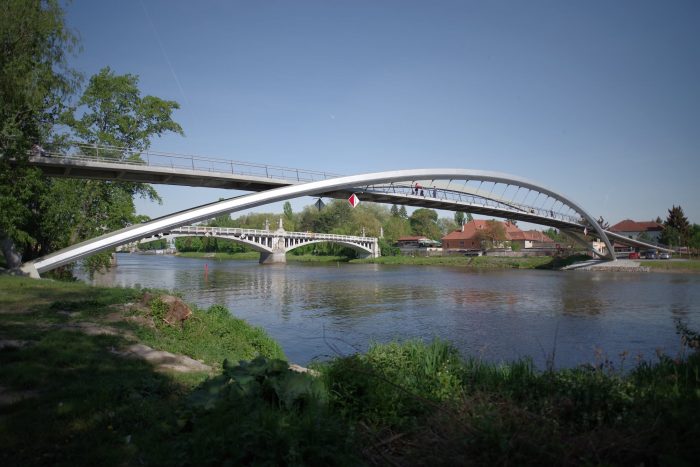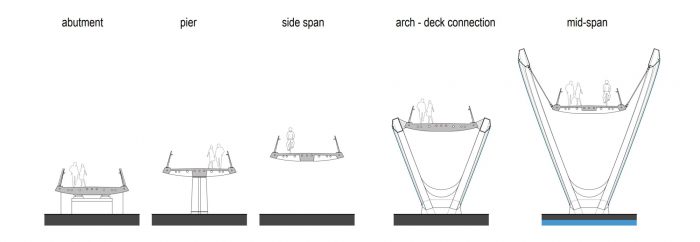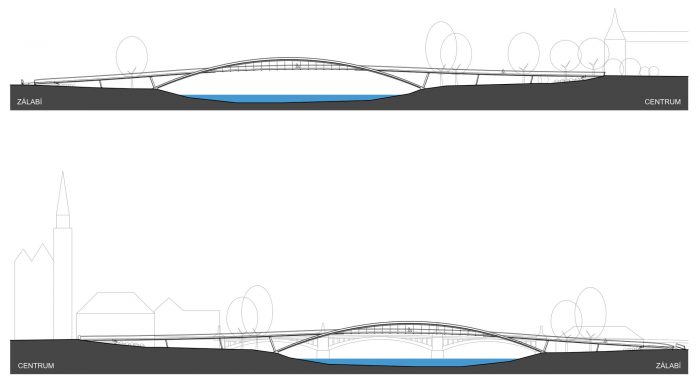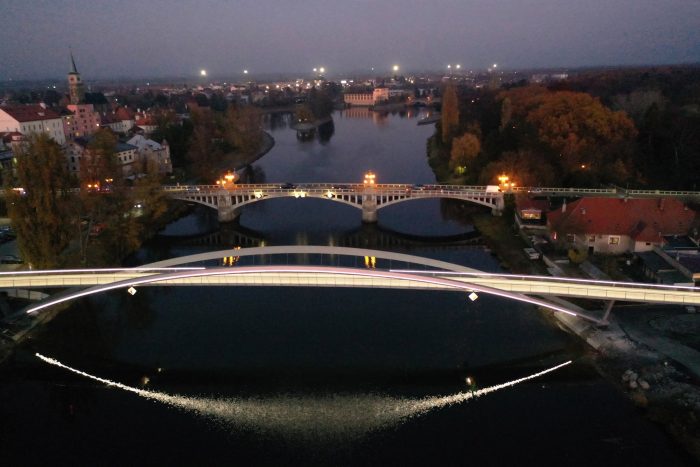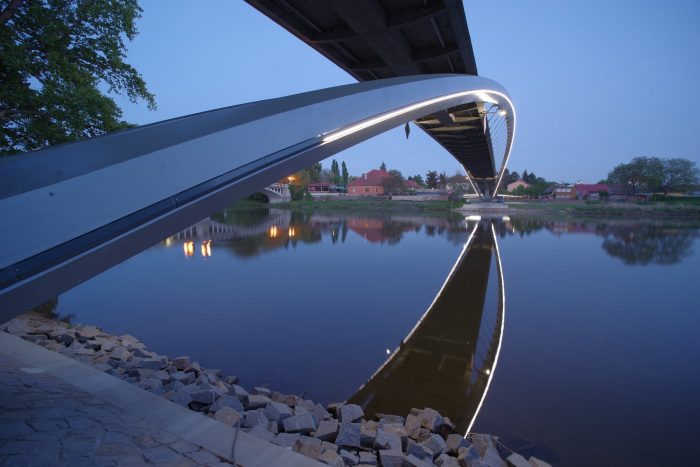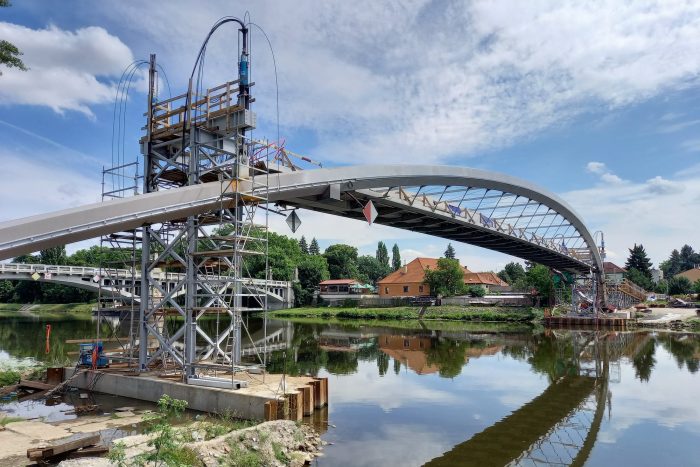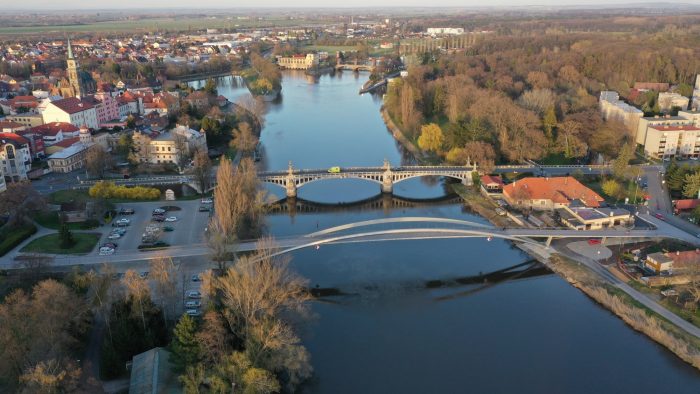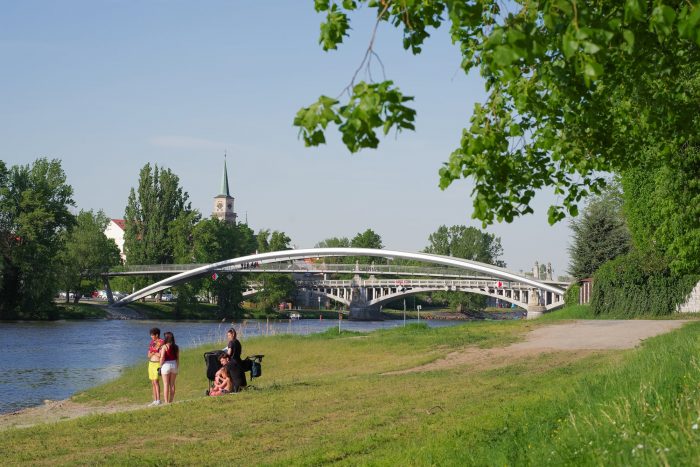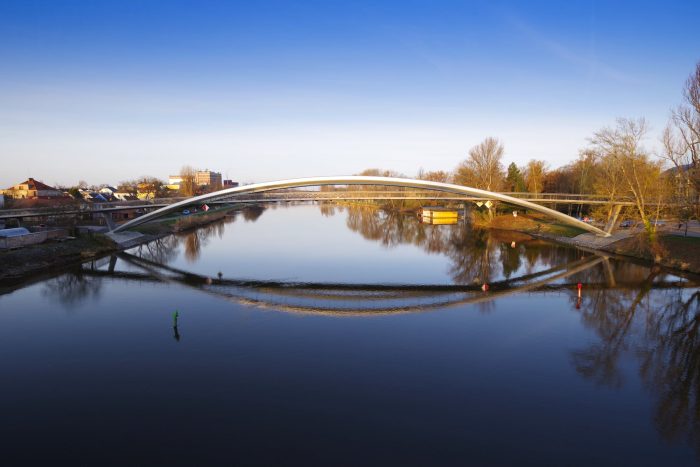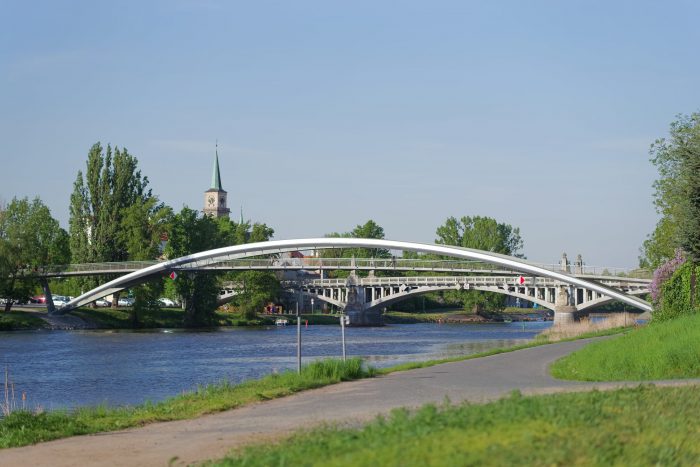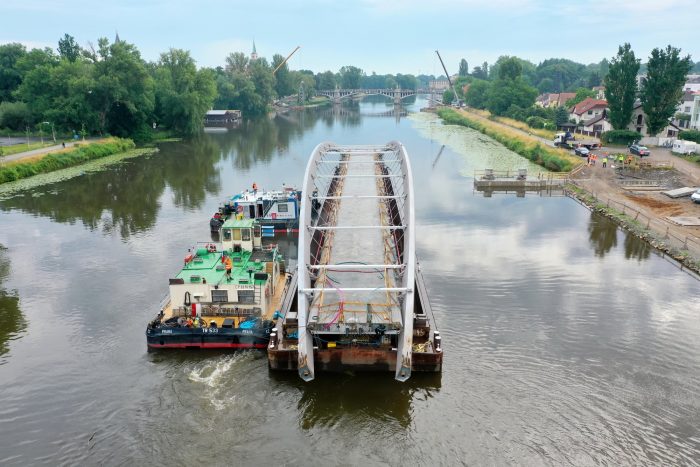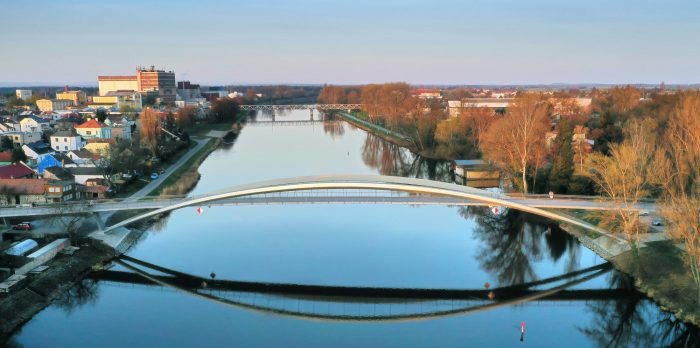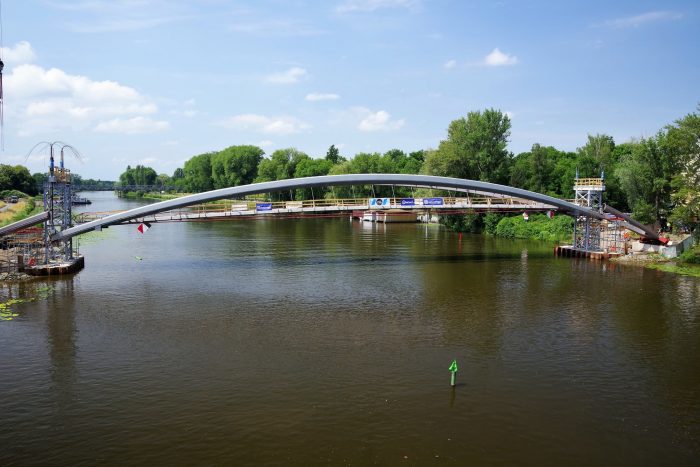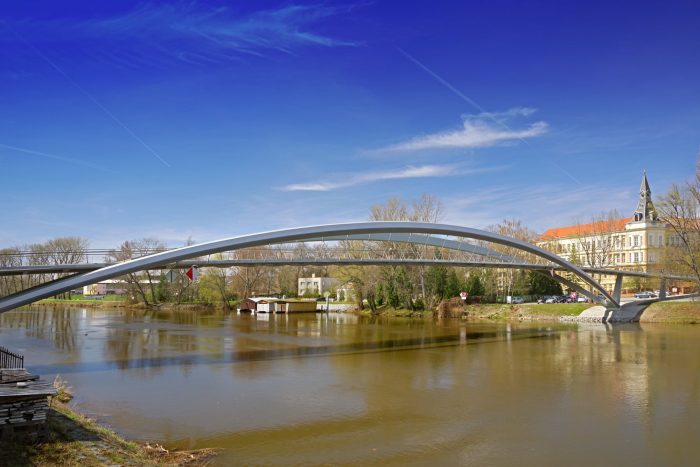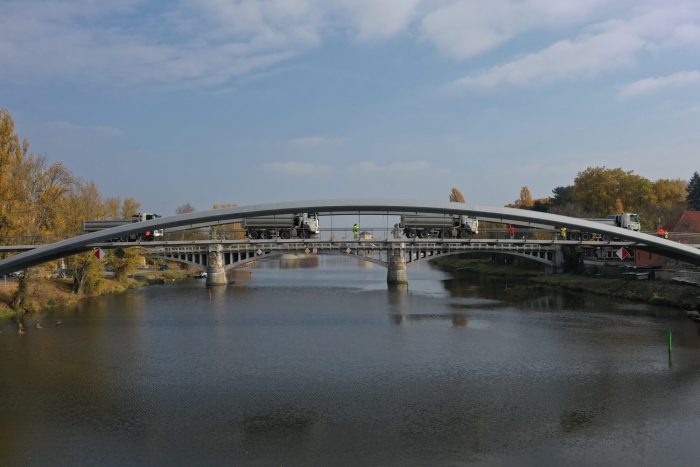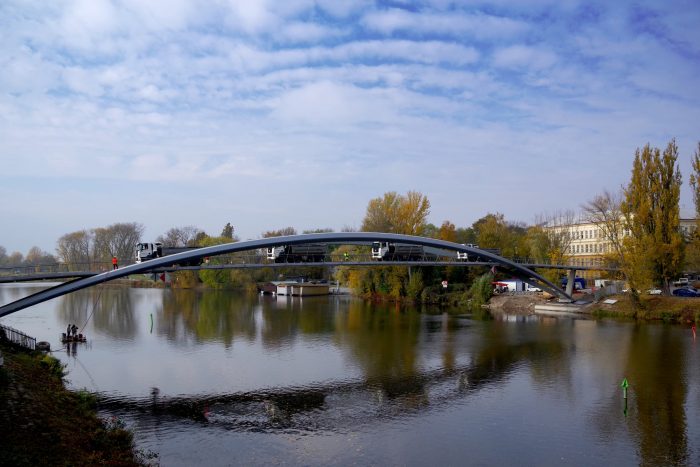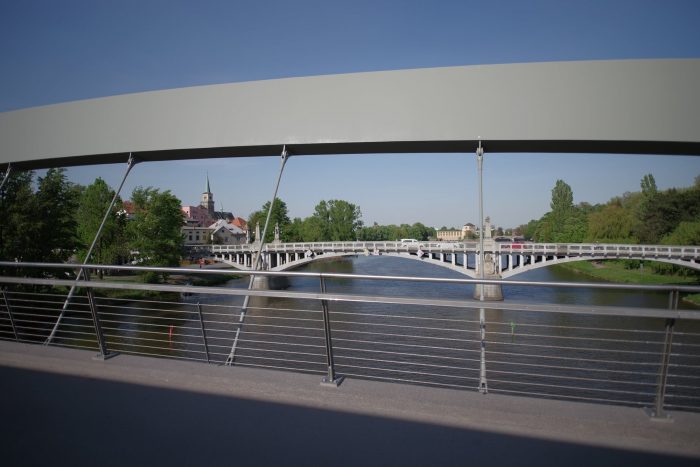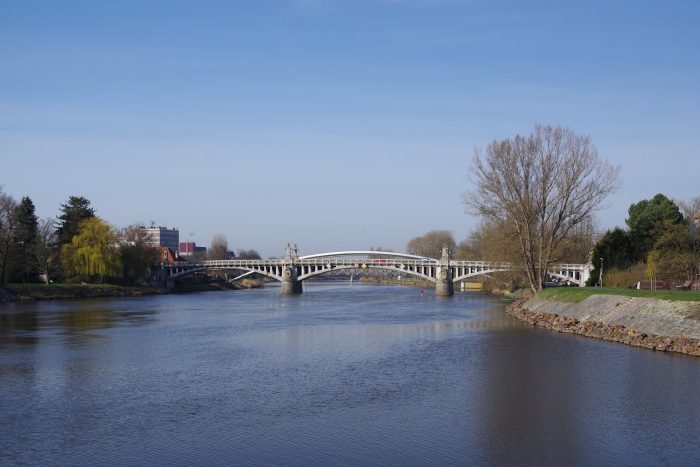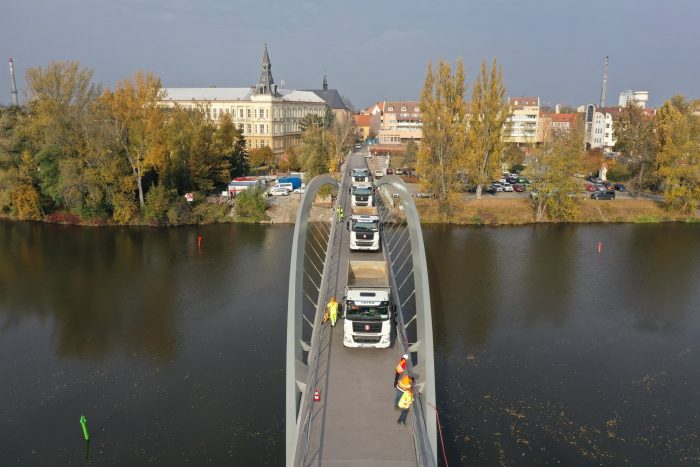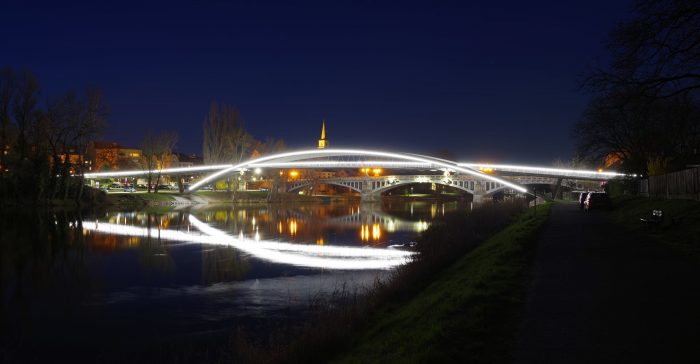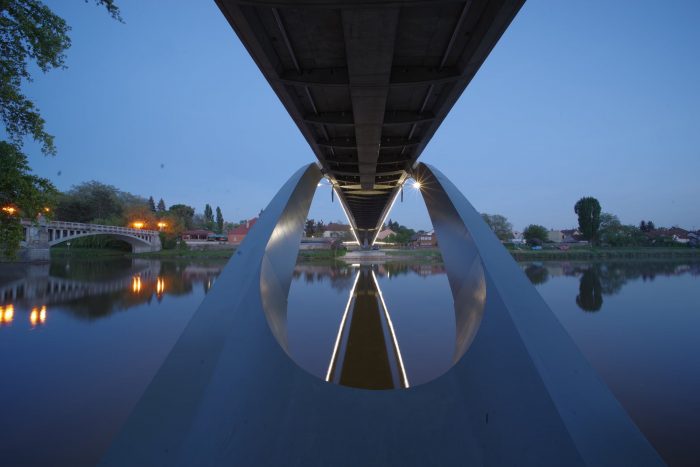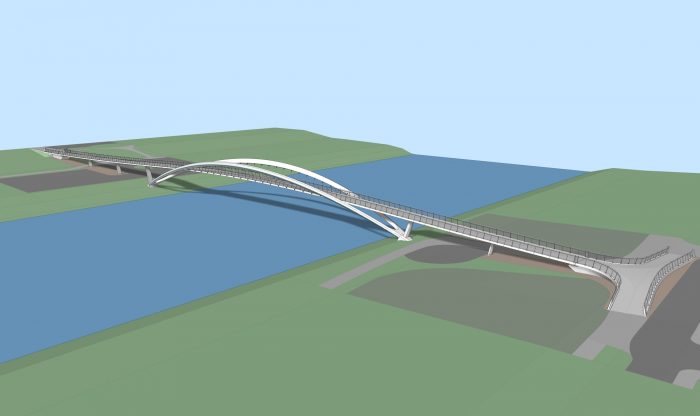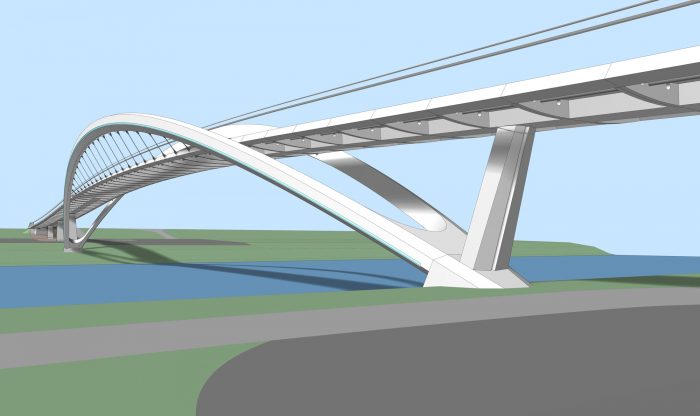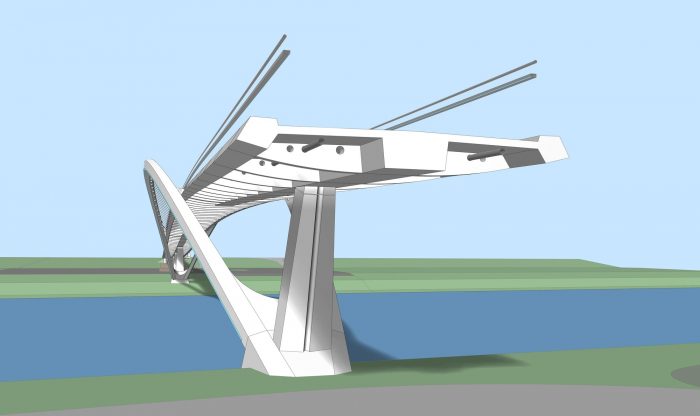这座人行和自行车桥位于城市的历史中心和城镇郊区’Zálabí’之间,连接着沿河两岸的自行车和人行小道。由于它位于历史上的拱桥附近,所以它也是由拱形结构形成的,但它的跨度较长,在河中没有支撑物。桥梁结构由两个向外倾斜的钢拱门组成,上面悬挂着预应力混凝土的桥面。拱门的高度是这样选择的:在主要部分,拱门位于行人的头顶上,因此不会阻碍他们对历史名城的清晰视野,同时,它也不会遮挡沿河行走的人们对历史名桥的视线。
The pedestrian and cyclist bridge, which is situated between the city’s historic center and town suburb ‘Zálabí’, connects cycling and pedestrian trails running along both banks of the river. Since it is located near a historic arch bridge, it is also formed by an arch structure, but it has a longer span and it has no supports in the river. The bridge structure consists of two outwardly inclined steel arches, on which a bridge deck from prestressed concrete is suspended. The rise of the arches was chosen so that in the predominant part the arches are situated above the heads of pedestrians, and thus do not obstruct their clear view of the historic city and, at the same time, it does not obscure the view of the historic bridge to people walking along the river.
总长203.80米的桥面由8个跨度的连续梁构成,跨度长度从16.41米到71.93米。5.50米宽的预应力混凝土桥面被悬挂在河面上的钢拱上。拱门的跨度为103.17米,垂直高度为11.25米。桥梁的几何形状保证了桥面的纵向坡度不大于7.70%。
The bridge deck of a total length of 203.80 m is formed by a continuous girder of eight spans of span lengths from 16.41 to 71.93 m. 5.50 m wide prestressed concrete deck is suspended above the river on steel arches. The span length of the arches is 103.17 m and their vertical rise is 11.25 m. The bridge geometry guarantees that the longitudinal slope on the bridge deck is not larger than 7.70%.
典型的吊杆是由钢筋形成的。在带有拱门的桥面投影处,相互连接是在架设过程中由可移动的钢铰链形成的。这些铰链在架设完成后被铸成短块。
Typical suspenders are formed by steel bars. At the projection of the deck with arches, the mutual connection was formed by movable steel hinges during the erection. These hinges were cast into short blocks when the erection was completed.
桥梁的中间部分在岸边组装,随后漂浮到桥址,在那里被悬挂在架设塔架上,并被提升到设计位置。然后,拱形弹簧和边跨的甲板被建造。设计假设和工作质量通过静态和动态负载试验得到了验证。
The middle part of the bridge was assembled on the bank and subsequently floated to the bridge site, where it was suspended on the erection towers and lifted into the designed position. Then the arch spring and the deck of the side spans were constructed. The design assumption and quality of the work were verified by static and dynamic loading tests.
该桥形成了一个半整体的结构体系,其中主要的承重构件–拱肋被固定在基座上,并与桥面框架连接。由高强度混凝土制成的桥面具有坚固的横截面,易于检查和维护,拱肋具有封闭的单细胞横截面,焊接处密封横截面,保证水和空气的密封性。肋骨的形状简单明了,横向稳定性是由悬挂在倾斜吊架上的桥面提供的。因此,不需要拱形支撑或横向梁支撑桥面。
The bridge forms a semi-integral structural system in which the main load-bearing members – the arch ribs are fixed into the footings and are frame connected with the deck. The deck from high-strength concrete has a robust cross-section that can be easily inspected and maintained, the arch ribs have a closed one-cell cross-section which welds seal the cross-section and guarantee water and air tightness. The ribs have a simple and clean shape and transverse stability is given by the deck suspended on inclined hangers. Therefore, no arch bracing or transverse beams supporting the deck are required.
该桥位于旧拱形结构附近,采用了类似的结构体系,然而,其较大的跨度和简洁的形状表达了科技的进步。该结构轻盈透明,钢构件被涂成灰绿色,因此桥梁不会压倒现有的桥梁,而是与之互补。该桥尊重城市的规模,它由具有人性的元素组成,对使用者来说是舒适的,它因行人或风的移动而产生的运动不会给使用者带来不愉快的感觉。该桥的建造对河上的交通和美丽的波拉比景观的影响最小。
The bridge, which is situated close to the old arch structure, utilizes a similar structural system, however, its larger span and its clean shape express the progress in science and technology. The structure is light and transparent, and the steel elements are painted grey-green therefore bridge does not overwhelm the existing bridge but complements it. The bridge respects the scale of the city, it consists of elements that have human dimensions, it is comfortable for the users, and its movement caused by the movement of pedestrians or wind does not cause unpleasant feelings to users. The bridge was built with minimal impact on traffic on the river and on the beautiful Polabian landscape.
Architects: Strasky, Husty a partneri (SHP)
Area : 2452 m²
Year : 2021
Photographs :Milos Vejchoda, Michal Venos
Manufacturers : Freyssinet CS, a.s., LEMONTA s.r.o. , Macalloy Ltd , VSL SYSTEMY /CZ/, s.r.o.
Architectural Design : Jiri Strasky
Main Contractor : HOCHTIEF CZ a.s.
Geotechnical Engineering : Jan Masopust
Lighting Design : Jiri Vrba
Conceptual Design : Jiri Strasky
Construction Drawing : Tomas Romportl
Final Design : Leonard Sopik, Jan Pozdisek, Karel Zlatuska
City : Nymburk
Country : Czech Republic

